Note
Click here to download the full example code
Transform a distribution¶
In this example we are going to use distribution algebra and distribution transformation via functions.
from __future__ import print_function
import openturns as ot
import openturns.viewer as viewer
from matplotlib import pylab as plt
ot.Log.Show(ot.Log.NONE)
We define some (classical) distributions :
distribution1 = ot.Uniform(0.0, 1.0)
distribution2 = ot.Uniform(0.0, 2.0)
distribution3 = ot.WeibullMin(1.5, 2.0)
Sum & difference of distributions¶
It is easy to compute the sum of distributions. For example :
distribution = distribution1 + distribution2
print(distribution)
graph = distribution.drawPDF()
view = viewer.View(graph)
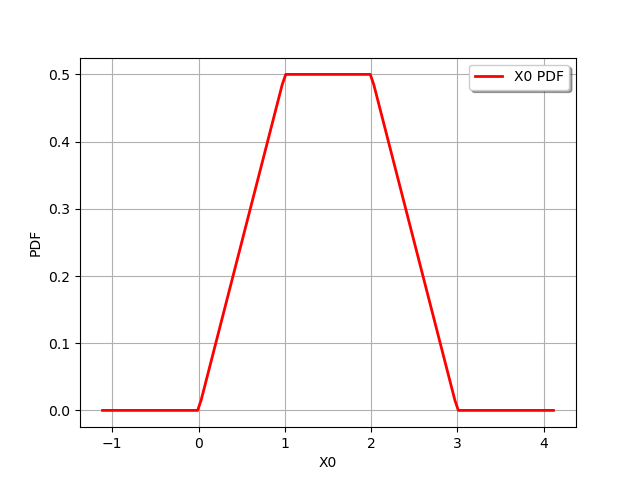
Out:
Trapezoidal(a = 0, b = 1, c = 2, d = 3)
We might also use substraction even with scalar values :
distribution = 3.0 - distribution3
print(distribution)
graph = distribution.drawPDF()
view = viewer.View(graph)
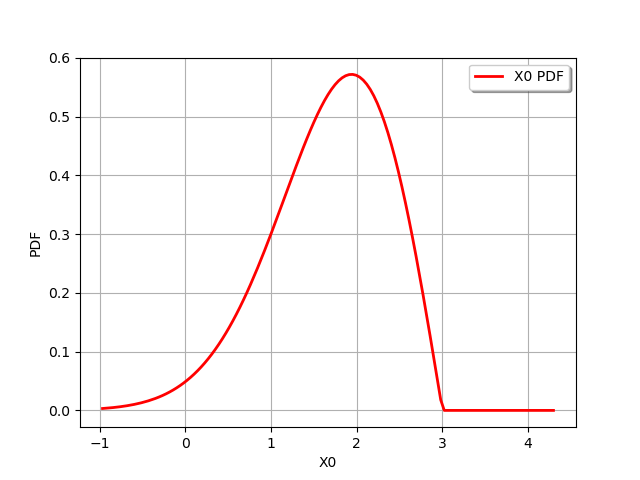
Out:
RandomMixture(3 - WeibullMin(beta = 1.5, alpha = 2, gamma = 0))
Product & inverse¶
We might also compute the product of two (or more) distributions. For example :
distribution = distribution1 * distribution2
print(distribution)
graph = distribution.drawPDF()
view = viewer.View(graph)
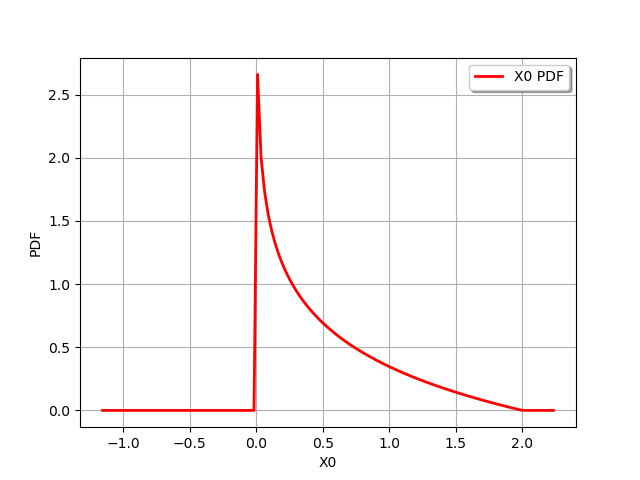
Out:
ProductDistribution(Uniform(a = 0, b = 1) * Uniform(a = 0, b = 2))
We could also inverse a distribution :
distribution = 1 / distribution1
print(distribution)
graph = distribution.drawPDF()
view = viewer.View(graph)
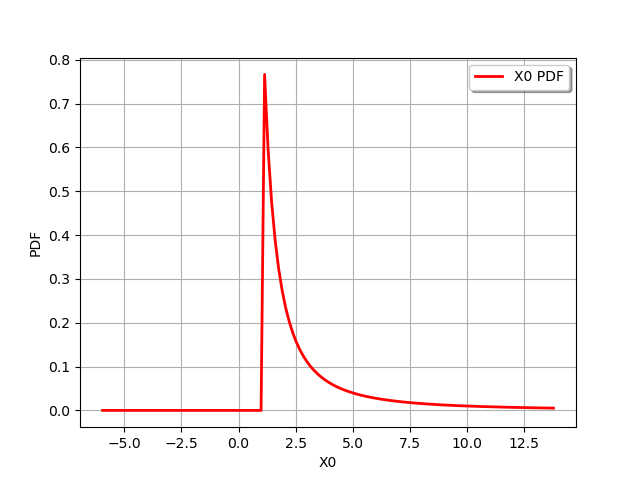
Out:
CompositeDistribution=f(Uniform(a = 0, b = 1)) with f=[x]->[1.0 / x]
Or compute a ratio distribution :
ratio = distribution2 / distribution1
print(ratio)
graph = ratio.drawPDF()
view = viewer.View(graph)
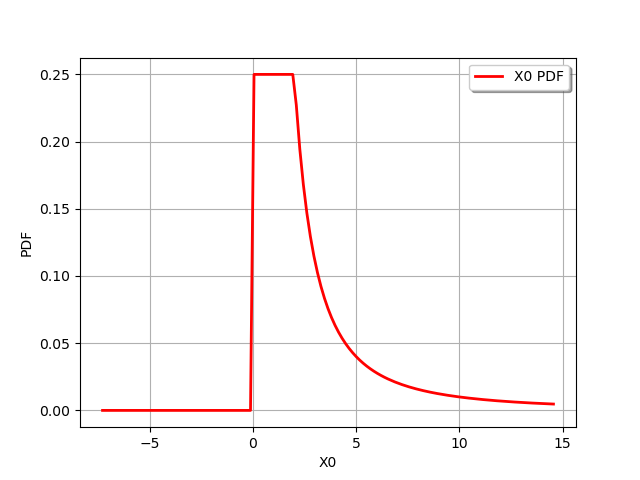
Out:
ProductDistribution(Uniform(a = 0, b = 2) * CompositeDistribution=f(Uniform(a = 0, b = 1)) with f=[x]->[1.0 / x])
Transformation using functions¶
The library provides methods to get the full distributions of f(x) where f can be equal to :
sin,
asin,
cos,
acos,
tan,
atan,
sinh,
asinh,
cosh,
acosh,
tanh,
atanh,
sqr (for square),
inverse,
sqrt,
exp,
log/ln,
abs,
cbrt.
For example for the usual log transformation :
graph =distribution1.log().drawPDF()
view = viewer.View(graph)
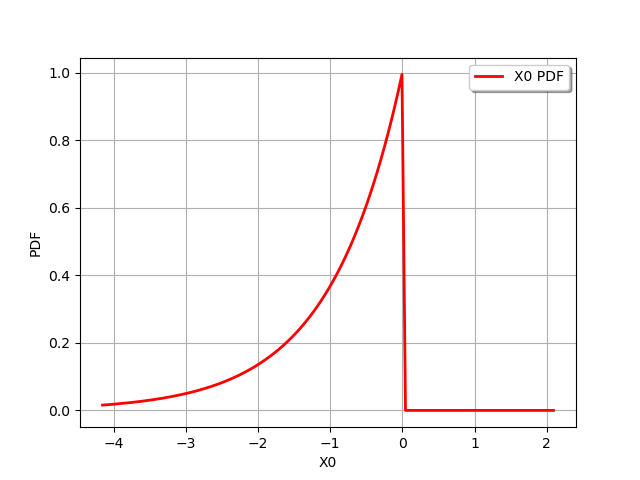
And for the log2 function :
f = ot.SymbolicFunction(['x'], ['log2(x)'])
f.setDescription(["X","ln(X)"])
graph = ot.CompositeDistribution(f, distribution1).drawPDF()
view = viewer.View(graph)
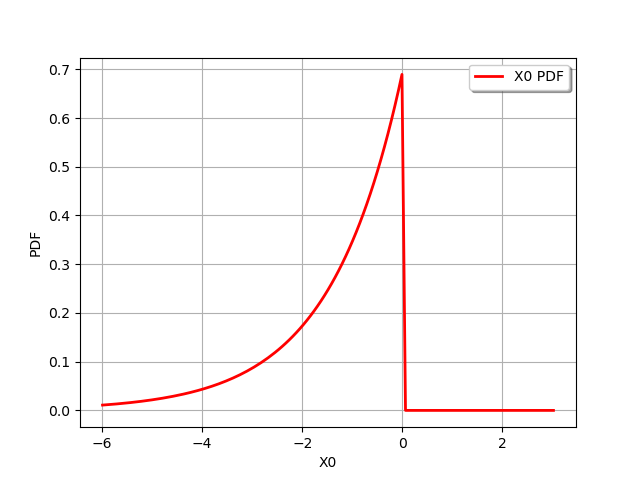
If one wants a specific method, user might rely on the CompositeDistribution class.
# Create a composite distribution
# -------------------------------
#
# In this paragraph we create a distribution defined as the push-forward distribution of a scalar distribution by a transformation.
#
# If we note :math:`\mathcal{L}_0` a scalar distribution, :math:`f: \mathbb{R} \rightarrow \mathbb{R}` a mapping, then it is possible to create the push-forward distribution :math:`\mathcal{L}` defined by
#
# .. math::
# \mathcal{L} = f(\mathcal{L}_0)
#
We create a 1D normal distribution :
antecedent = ot.Normal()
and a 1D transform :
f = ot.SymbolicFunction(['x'], ['sin(x)+cos(x)'])
We then create the composite distribution :
distribution = ot.CompositeDistribution(f, antecedent)
graph = distribution.drawPDF()
view = viewer.View(graph)
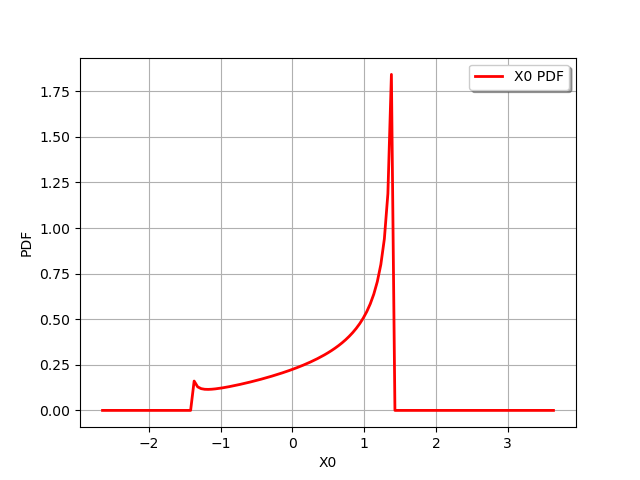
We can also build a distribution with the simplified construction :
distribution = antecedent.exp()
graph = distribution.drawPDF()
view = viewer.View(graph)
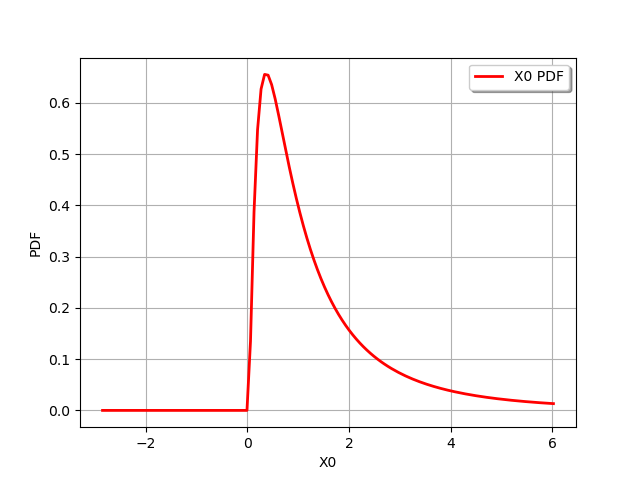
and by using chained operators :
distribution = antecedent.abs().sqrt()
graph = distribution.drawPDF()
view = viewer.View(graph)
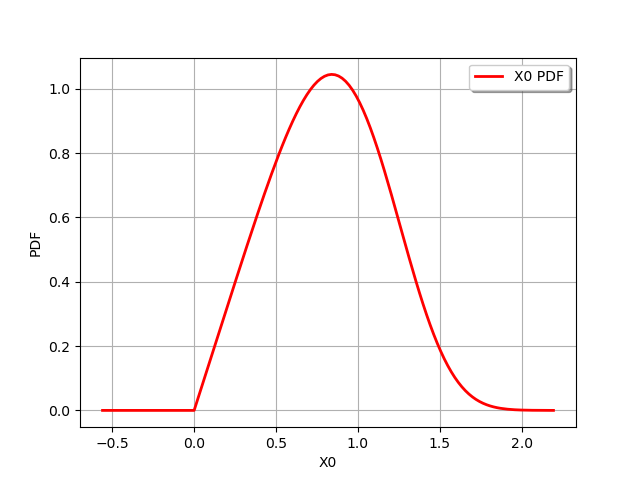
Display all figures
plt.show()
Total running time of the script: ( 0 minutes 1.028 seconds)
 OpenTURNS
OpenTURNS